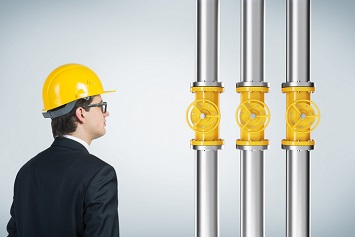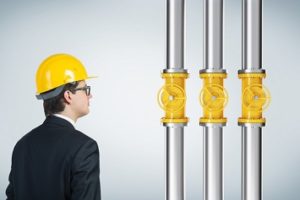Prevent Ammonia Releases During Normal and Shutdown Operations Wednesday - July 12, 2017
During the early morning hours of June 6, 2017, an ammonia leak at a Mrs. Grissom’s Salads production facility just outside Nashville, Tennessee, trapped 32 people—some of them inside an administrative building at the site; others at the Coca-Cola bottling plant next door. The leak was outside the Mrs. Grissom’s facility, but the cutoff valves were inside, complicating the response operations.
When your facility handles ammonia, for refrigeration or for other purposes, it is important to take steps to prevent leaks and releases. Here’s a look at why, as well as a look at how to prevent releases during shutdown operations.
Ammonia Hazards
Ammonia used in industry is generally handled as a pressurized gas, in a waterless (anhydrous) form. Because anhydrous ammonia systems are pressurized, releases can readily occur if appropriate precautions are not taken. When it is released, ammonia can result in:
- Respiratory distress. Ammonia is corrosive to the skin, eyes, and lungs. Lower concentrations in air cause eye and respiratory irritation, coughing, and wheezing. Concentrations of 300 parts per million (ppm) or greater are immediately dangerous to life or health (IDLH).
- Fires and explosions. Ammonia is flammable and can be explosive, especially in an enclosed space or when other flammable chemicals are present.

Operational Leak Prevention
Following an incident in which a winery worker was killed after a coworker opened the wrong valve, California OSHA issued general guidelines for employers for preventing accidental ammonia releases during normal operations, including recommendations to:
- Develop and maintain a written operational and preventive maintenance program.
- Require all refrigeration maintenance personnel and operators to follow written, standard procedures for operating and maintaining the system at safe limits.
- Ensure that the ammonia refrigeration system is operated and maintained only by trained and competent personnel.
Shutdown Operations
Ammonia system shutdown operations are another circumstance during which improper procedures can result in a release. Releases can occur while workers are opening and draining process equipment, locking out equipment for maintenance, or blocking liquid ammonia lines and equipment—especially equipment that contains ammonia liquid that is below ambient temperature.
To prevent releases, OSHA recommends that facilities look closely at their:
- Equipment. In particular, ammonia relief systems should be designed and installed according to generally accepted good engineering practices.
- Procedures and training. Workers should have detailed written procedures and thorough training that covers lockout/tagout, opening and draining process equipment, and blocking liquid ammonia lines.
- Accident and near-miss investigation. Any accident or near miss that could have resulted in a release of ammonia should be investigated and any identified issues addressed.
- Emergency procedures. In case of release, an emergency action plan should be established and implemented.

No comments:
Post a Comment